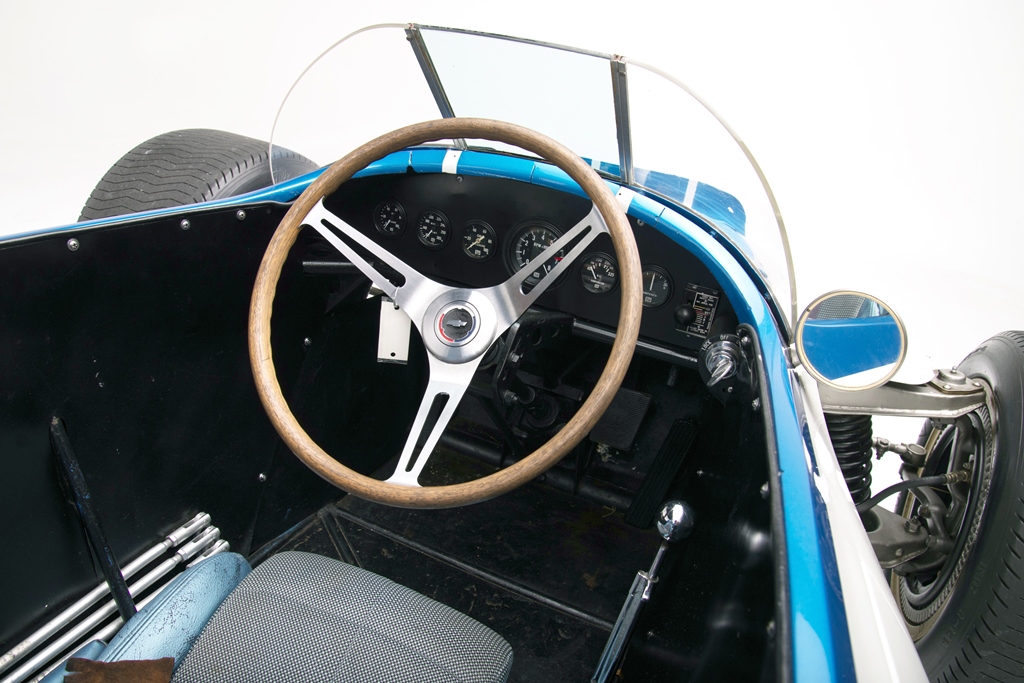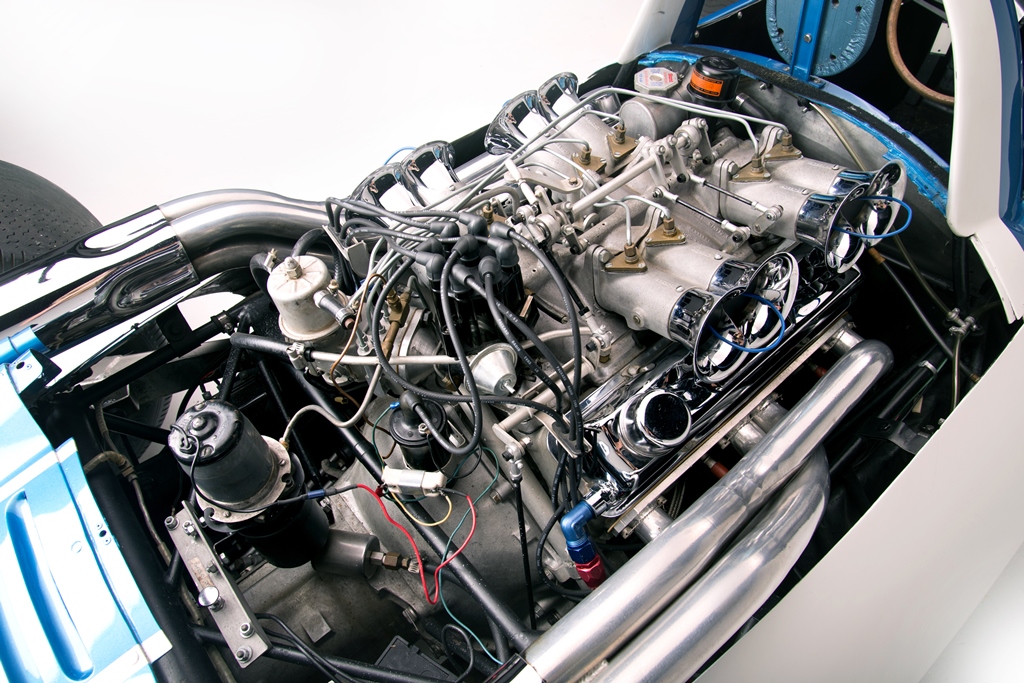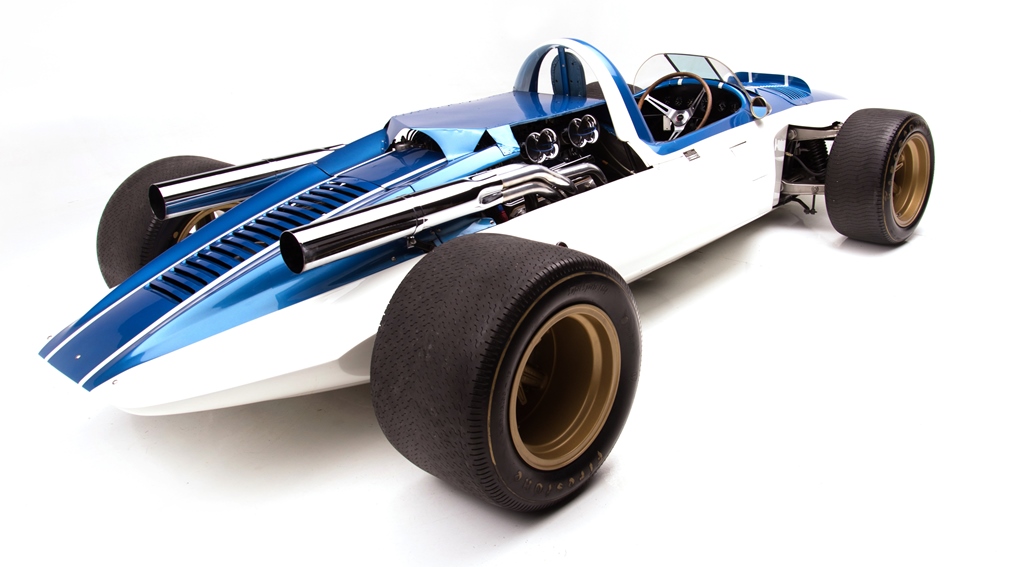1960 CERV I Corvette
Posted by Barrett-Jackson
Written by independent automotive journalist Roger C. Johnson
THE ONE AND ONLY: Zora Arkus-Duntov's Chevrolet Engineering Research Vehicle (CERV) 1
When the hottest engineers and designers in the automotive business put their heads together, you can be sure something historic will happen. And in this case, it happened several times. The first Chevrolet Engineering Research Vehicle (CERV 1) debuted in 1960, and was created to develop Corvette suspension and driveline components for the production car. It was the result of the talented engineer Zora Arkus-Duntov, along with designers Larry Shinoda and Tony Lapine. Together, and separately, they made history happen during the glory years of Bill Mitchell's jet-age Detroit and beyond. And it was their CERV 1 that drove us all towards the future.
 This fantastic piece of automotive engineering has Chevrolet's blood, sweat and ingenuity written all over it. Their no-nonsense, racetrack test bed incorporates a single center-mounted seat, fully independent suspension, a 4-speed transmission, and heavy-duty finned drum brakes front and rear. A precision recirculating ball steering system was incorporated to assure proper driver feedback and fast response.
This fantastic piece of automotive engineering has Chevrolet's blood, sweat and ingenuity written all over it. Their no-nonsense, racetrack test bed incorporates a single center-mounted seat, fully independent suspension, a 4-speed transmission, and heavy-duty finned drum brakes front and rear. A precision recirculating ball steering system was incorporated to assure proper driver feedback and fast response.
Power was originally supplied by a fuel-injected 350-horsepower 283. Magnesium and aluminum alloy engine pieces whittled down the weight of this power plant to a svelte 350 pounds. The car's Rochester injection system fed the juice from two rubber bladder fuel cells.
 Although this rear-engine CERV 1 was conceived to be a track bully, it was not actually built to be sanctioned by any racing organization. Consequently it never officially competed, although it did have the proper dimensions for an Indy car. But, as you may recall, GM banished racing from their kingdom during this period. Talk about driving a fine line.
Although this rear-engine CERV 1 was conceived to be a track bully, it was not actually built to be sanctioned by any racing organization. Consequently it never officially competed, although it did have the proper dimensions for an Indy car. But, as you may recall, GM banished racing from their kingdom during this period. Talk about driving a fine line.
The CERV 1 first appeared in public with Duntov at the wheel doing demo laps at the 1960 U.S. Grand Prix in Riverside, California. Imagine owning a car not only developed by Duntov, but also driven by him.
The team would eventually replace the original engine with a 377ci aluminum small block utilizing an upgraded version of the Rochester fuel-injection system. They also rethought the car's aerodynamics and made changes in the process. It is presented in that configuration here and now.
 The culmination of this effort would go on to push the CERV 1 past the 200 mph mark. For the sake of reference in 1960, the fastest lap speed at Indy was 146 mph. Imagine doing statistical analysis at 206 mph in an open-air rocket ship. Some people get all the good jobs. By the way, it would be five more years before a modern rear-engine Indy car would appear on the track.
The culmination of this effort would go on to push the CERV 1 past the 200 mph mark. For the sake of reference in 1960, the fastest lap speed at Indy was 146 mph. Imagine doing statistical analysis at 206 mph in an open-air rocket ship. Some people get all the good jobs. By the way, it would be five more years before a modern rear-engine Indy car would appear on the track.
It is difficult to imagine any other vehicle that has had an impact on our current performance machinery like this 1960 engineering prototype from Chevrolet. It is a bare-bones, open-wheel, rolling laboratory that was destined to be a one-of a-kind workhorse for some of the luckiest engineers in the world at an unforgettable moment in time.
"GM's CERV 1 is one of the most significant experimental vehicles in American automotive history," said Craig Jackson, chairman and CEO of Barrett-Jackson. "Arkus-Duntov masterfully bridged his aptitude for engineering and design with his racing acumen to create an experimental vehicle that blazed new roads for the automaker. CERV I was a test bed for many advances of the era, particularly in regards to the development of the Chevrolet Corvette. It's rare that experimental cars survive beyond their intended purpose like CERV I. Duntov broke all the rules with the CERV I, and we're honored to be a part of its history when it crosses our block in Scottsdale this January."
Now is your chance to own the ultimate collectable. No one else in the world will have its equal. A completely documented paper trail on this incredibly rare piece of automotive history is proudly included in the sale of the one and only CERV 1.
Duntov, Shinoda and Lapine would go on to work together during the development of the new 1963 Stingray. Shinoda's hand would then touch Ford's Boss 302 Mustang, among other projects for that company. Lapine joined Porsche and moved back to his homeland in Germany, where he designed the 924 and 928 models. And Duntov would become the official godfather of the Corvette forever. Provenance will never get more compelling than that.
General Motors Media Press Release
FOR RELEASE: November 6, 1997
CONTACT: Chevrolet Communications
Phone: 1-800-CHEVY-MI 0r 810-492-8841
Fax: (810) 492-8853
CERV-I -- An Automotive Benchmark
 LAS VEGAS — Chevrolet rolls out the legendary CERV-I (Chevrolet Engineering Research Vehicle) — at the 1997 SEMA show. The 1960 CERV-I is the first of four high performance research vehicles produced by Chevrolet over a 35 year period.
LAS VEGAS — Chevrolet rolls out the legendary CERV-I (Chevrolet Engineering Research Vehicle) — at the 1997 SEMA show. The 1960 CERV-I is the first of four high performance research vehicles produced by Chevrolet over a 35 year period.
Zora Arkus-Duntov developed it as a platform for engineers to develop and refine Chevrolet body, chassis and suspension systems. Its impressive performance on the test track drove him to have higher aspirations — the checkered flag at Indy. Regretfully, due to a ban on racing by Chevrolet at the time, Duntov was unable to compete — he settled for a few demo laps at the U.S. Grand Prix in 1960.
Originally, the CERV-I was equipped with a 283 cu. in. small block V8 engine that delivered 350 horsepower while weighing only 350 lbs. — an impressive power-to-weight ratio rarely achieved in even high performance aircraft of its time. This lightweight status was due to an intensive use of aluminum and magnesium engine components — saving over 175 lbs. Duntov employed a Corvette-type 4-speed transmission to harness this power.
Complementing its lightweight powerplant, designer, Larry Shinoda constructed CERV-I's body structure out of fiberglass-reinforced plastic — weighing in at only 80 lbs. This body structure was attached to a very rigid 125 lb. chrome-molybdenum tube constructed frame. Combining these lightweight components helped the CERV-I weigh in at a lean 1,600 lbs.
CERV-I's chassis system also features a four-wheel independent suspension with a unique rear multilink system that's very similar to systems used in modern automobiles. The brake system — also ahead of its time — employs an innovative two-piston master cylinder that eliminates the chance of complete brake failure.
Over time, with his eye on even greater performance, Duntov refitted the CERV-I with its current 377 cu. in. aluminum small block, an advanced Rochester fuel injection system and Indy-style tires and wheels. To match this mechanical updating, Shinoda redesigned its streamlined body structure for greater aerodynamics. Today the CERV-I appears in this second-generation form. It's owned by Mike Yager, President of Mid America Designs, and is part of the Mid America Designs car collection.
| 1960 CERV-I Spec Chart | |
| Engine | 377 cu. in. aluminum V8 |
| Transmission | Fully synchronized 4-speed manual |
| Driveline Configuration | Rear engine, rear-wheel drive |
| Fuel Delivery System | Rochester fuel injection |
| Fuel Tank | Two rubber bladder fuel cells with 20 gallon total capacity |
| Frame | Body-on-frame construction from tubular chrome-moly steel |
| Suspension | Four-wheel independent |
| Front — Independent, variable rate springs with shock absorbers and front stabilizer bar | |
| Rear — Independent multilink, variable rate springs with "double-acting" shock absorbers | |
| Brakes | Front disc/rear drum (similar system to the HD type available on 1960 Corvette), two piston master cylinder |
| Steering | Recirculating ball type steering gear with 12:1 ratio |
| Wheels | Cast magnesium alloy |
| Wheelbase | 96 inches |
| Weight | 1,600 lbs. |
| Maximum Speed | 206 mph |

